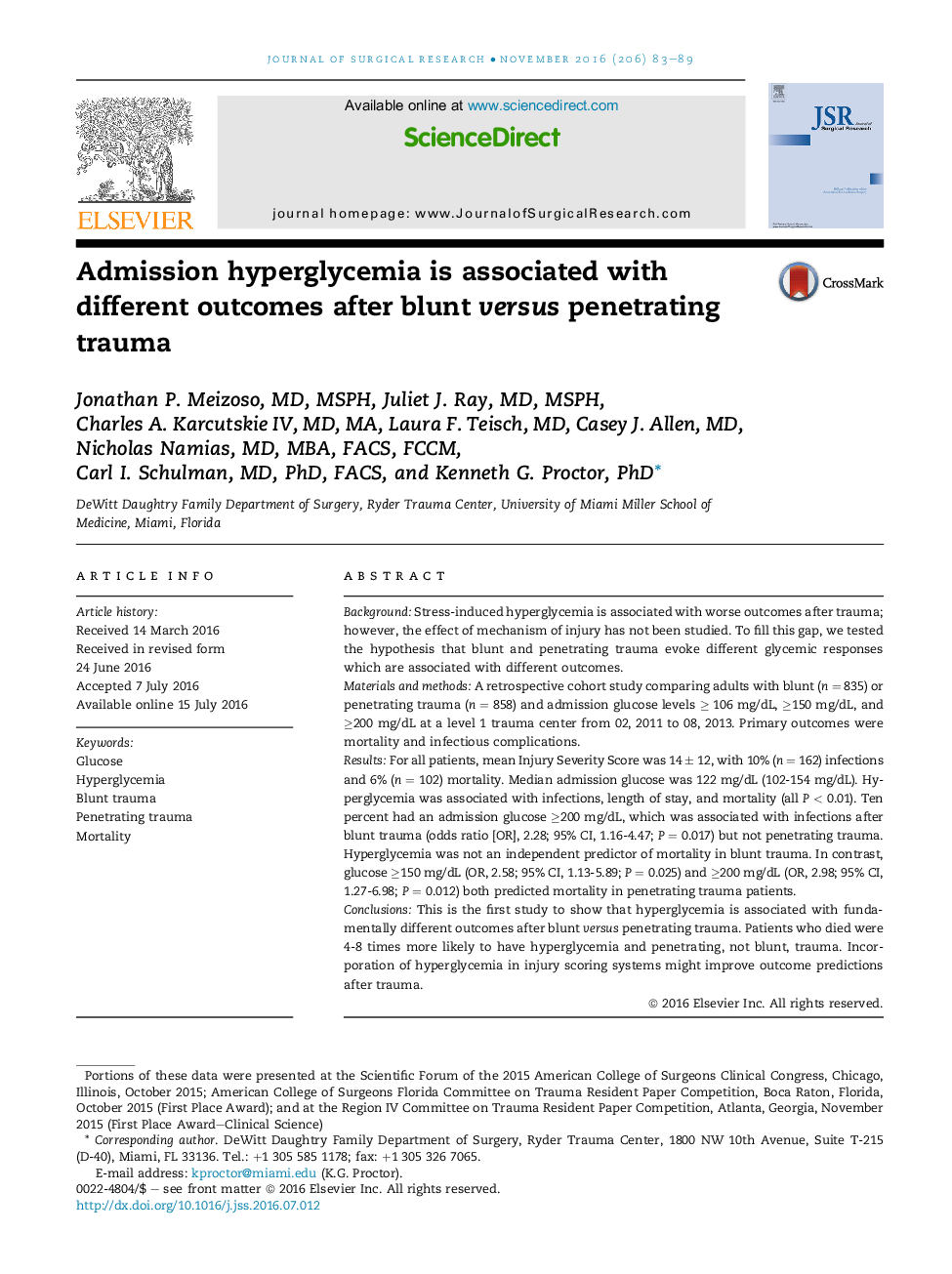| کد مقاله | کد نشریه | سال انتشار | مقاله انگلیسی | نسخه تمام متن |
|---|---|---|---|---|
| 4299088 | 1288381 | 2016 | 7 صفحه PDF | دانلود رایگان |
BackgroundStress-induced hyperglycemia is associated with worse outcomes after trauma; however, the effect of mechanism of injury has not been studied. To fill this gap, we tested the hypothesis that blunt and penetrating trauma evoke different glycemic responses which are associated with different outcomes.Materials and methodsA retrospective cohort study comparing adults with blunt (n = 835) or penetrating trauma (n = 858) and admission glucose levels ≥ 106 mg/dL, ≥150 mg/dL, and ≥200 mg/dL at a level 1 trauma center from 02, 2011 to 08, 2013. Primary outcomes were mortality and infectious complications.ResultsFor all patients, mean Injury Severity Score was 14 ± 12, with 10% (n = 162) infections and 6% (n = 102) mortality. Median admission glucose was 122 mg/dL (102-154 mg/dL). Hyperglycemia was associated with infections, length of stay, and mortality (all P < 0.01). Ten percent had an admission glucose ≥200 mg/dL, which was associated with infections after blunt trauma (odds ratio [OR], 2.28; 95% CI, 1.16-4.47; P = 0.017) but not penetrating trauma. Hyperglycemia was not an independent predictor of mortality in blunt trauma. In contrast, glucose ≥150 mg/dL (OR, 2.58; 95% CI, 1.13-5.89; P = 0.025) and ≥200 mg/dL (OR, 2.98; 95% CI, 1.27-6.98; P = 0.012) both predicted mortality in penetrating trauma patients.ConclusionsThis is the first study to show that hyperglycemia is associated with fundamentally different outcomes after blunt versus penetrating trauma. Patients who died were 4-8 times more likely to have hyperglycemia and penetrating, not blunt, trauma. Incorporation of hyperglycemia in injury scoring systems might improve outcome predictions after trauma.
Journal: Journal of Surgical Research - Volume 206, Issue 1, November 2016, Pages 83–89
